Despite team building’s reputation for being corny or an unnecessary perk, when done right it can make a meaningful difference. Fully engaged workforces have been reported to be as much as doubly productive when it comes to delivering revenue.
Even so, many organizations have either failed to prioritize or simply don’t know how to effectively implement team building. In this article, we’ll tackle the basics of team building, best practices, and how to use technology to bring it all together.
What is team building?
Team building is the conscious process of improving the quality of relationships within a specific group, aiming to increase productivity, engagement, and overall efficiency in the workplace.
This is often achieved through a myriad of activities, including:
- Goal-setting
- Gamification
- Training
- Coaching
- Skill-development
You might also be more familiar with activities branded as team building, like:
- Escape rooms
- Back to back drawing
- Solving puzzles
What are the benefits of team-building activities?
The right team building strategy can help you develop a sense of cooperation and camaraderie across your organization. By giving each team member a goal worth pursuing, they’ll take ownership of their work.For example, let’s say you’re a sales manager at a large manufacturing company and you’re facing a huge collaboration problem. All your sales reps are selfishly focusing on meeting their sales quotas despite sacrificing teamwork. This overly competitive behavior has developed a toxic environment in the office.
So, instead of taking the “good old” approach and simply scolding everyone, you decide to try something different. You schedule a private team meeting to define the problem and suggest potential solutions together. After a few hours of brainstorming ideas, you decide that, instead of paying commissions based on individual sales targets, you’ll pay commissions depending on the overall team performance. Thanks to this decision, your team starts working together to achieve a common goal. This is team building in its purest expression.
Contrary to popular belief, team building isn’t about playing games. Nor falling backward into the arms of a colleague. It’s not even about making new friends or having fun at the office. Even though recreational activities are helpful, they might feel forced and unnatural. Team building is all about learning to communicate and working together to achieve common goals. We’ll give you specific team building strategies a bit later, but first, let’s answer a common question.
It’s better for your bottom line
When your team feels as though they’re a part of something bigger, they feel more empowered and inspired. And when employees feel inspired, they’re 125% more productive.
Building an empowered team can increase employee retention rates by 48%, according to LinkedIn.
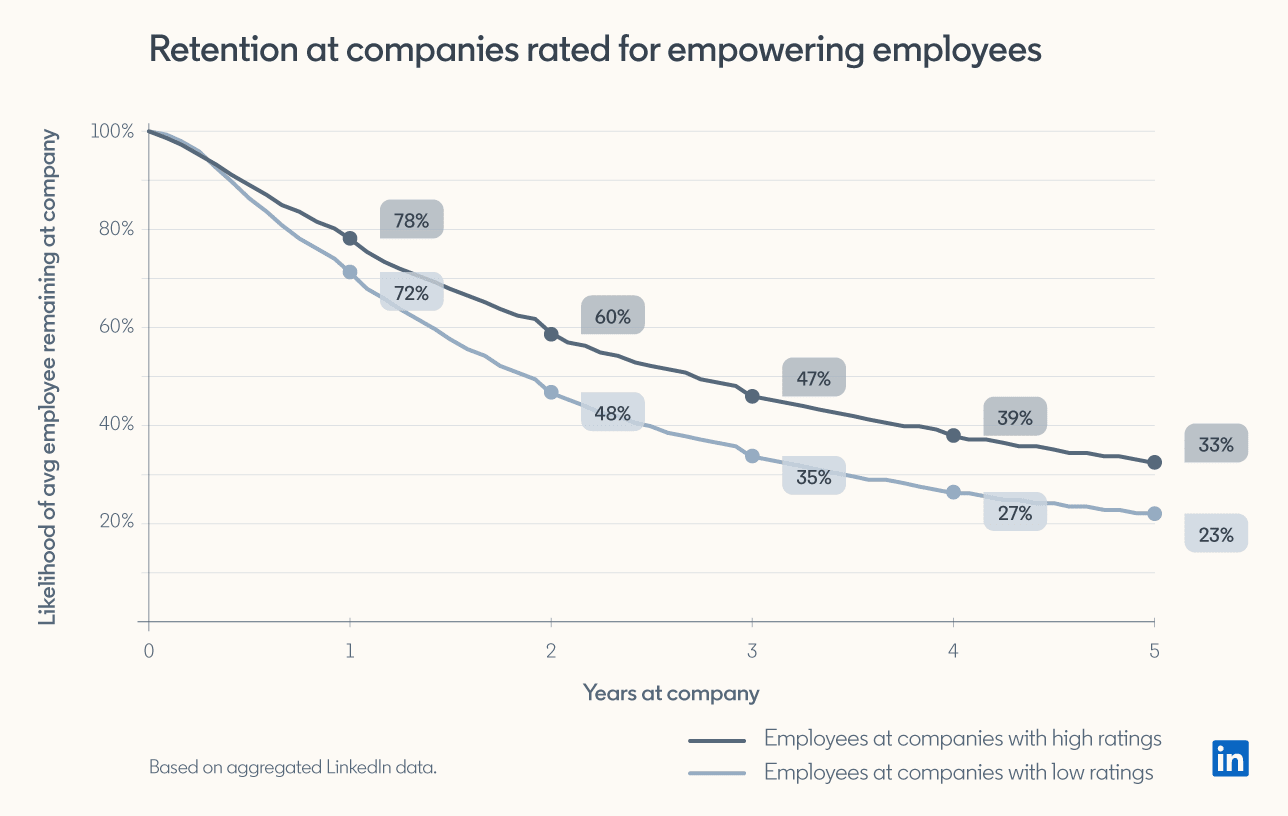
In short, if you want to build a better organization, you must start with the people and develop a better team first. When your employees work together, your growth isn’t linear, but exponential.
Other benefits of team building may include:
- Improved collaboration: when your team gets along and knows how to communicate, collaborating becomes easier.
- Reduced problems in the workplace: clear communication can help you spot and address potential problems before they start snowballing.
- Enhanced remote work and communication: the right team building process can turn an otherwise disconnected virtual team into a cohesive one.
5 Team building best practices
Now that you understand the basics of team building, let’s talk about some best practices for building a more successful team. This isn’t a comprehensive list of best practices, though, as some might differ depending on your industry. It does, however, cover some of the most important, including:
- Showing appreciation
- Building a sense of belonging
- Identifying team talents
- Celebrating together
- Sharing a common purpose
1. Show appreciation
Everyone likes to feel appreciated for their work, and your team isn’t the exception. Studies suggest that roughly 8 out of 10 employees feel happier when recognized by their boss.
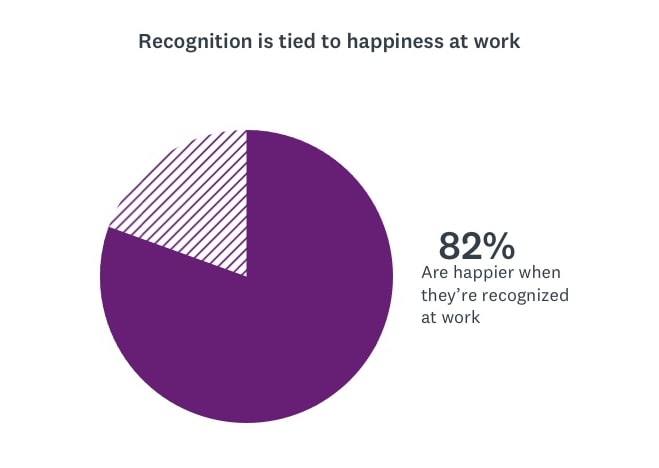
Just don’t confuse genuine appreciation with flattery. As Dale Carnegie, author of the classic “How to Win Friends and Influence People,” put it:
“The difference between appreciation and flattery? That is simple. One is sincere, and the other insincere. One comes from the heart out; the other from the teeth out. One is unselfish; the other selfish. One is universally admired; the other universally condemned.”
But instead of expecting appreciation to come spontaneously, you can build a culture of appreciation deliberately.
Some ideas for this include:
- Start yourself: Don’t wait for your team to show appreciation, lead by example instead.
- Develop a “thank you” policy: Simply saying thank you to your employees or peers can make a big difference.
- Listen to your team: Giving your undivided attention to your team members is one of the best ways to show appreciation.
2. Build a sense of belonging
Research from BetterUp shows that workplace belonging leads to several benefits, including:
- 56% increase in job performance
- 50% reduction in turnover risk
- 75% decrease in employee sick days
Now the question becomes: how do you develop a sense of belonging in your organization? If you want to evoke a sense of belonging across your organization, you must develop a clear team culture — an identity your team can adopt.
To do it, here are some ideas:
- Give away merchandise: Create branded shirts, coffee mugs, or hats, and give them away to your team.
- Set goals together: Host a monthly or quarterly session to set goals that matter to everyone, not just the management.
- Communicate a shared vision: Be transparent and share your organizational vision with the team.
- Develop inner slang: Develop an internal language that makes your team a part of something exclusive.
- Define a clear culture: Define clear values and principles, along with a code of conduct.
3. Identify your team’s talents
By identifying your team’s strengths and weaknesses, you can better allocate work and help each team member develop their full potential. For example, let’s imagine you’re the head chef in a famous restaurant. Your job is to make sure every customer gets their food fast without sacrificing quality.
To do it, you have to manage your team and assign specific tasks to each team member, including:
- Setting up the kitchen
- Cooking food
- Keeping wait staff informed on the status of orders
- Decorating dishes
To ensure efficiency, you must develop a deep understanding of your individual team members’ strengths and weaknesses. Otherwise, you might assign certain tasks to the wrong person. If one of your chefs isn’t great at decorating dishes, for example, but excels at preparing food, you might want to allocate this person’s work accordingly. This way, your entire team will work more productively, and everyone will perform at their best.
4. Celebrate together
When you build a culture of celebration, your team will appreciate it. Besides, celebrations present an opportunity for team members to get to know one another and strengthen their relationships.
Now, what should you celebrate?
Here are some ideas:
- Birthdays: Create a birthday calendar and make it accessible to everyone.
- Holidays: Organize a special event for main holidays (e.g., Christmas, Thanksgiving, Halloween, etc.).
- Milestones: Design a celebration ritual for your team’s accomplishments.
- Sports events: Watch a major sporting event together (some friendly competition can be healthy for the team).
- Personal achievements: Celebrate whenever a member of your team achieves something special (even if it isn’t work-related).
Also, make sure to celebrate even small progress. Seeing the impact of one’s work is incredibly rewarding.
For instance, modern team management platforms help you keep everyone informed on their progress. You could broadcast these dashboards across the office so that every team member can see how things are progressing. With monday.com, for example, you can bring your entire team to the platform and share your reporting dashboards with everyone (or specific team members). This way, you can ensure accountability while measuring and celebrating progress.
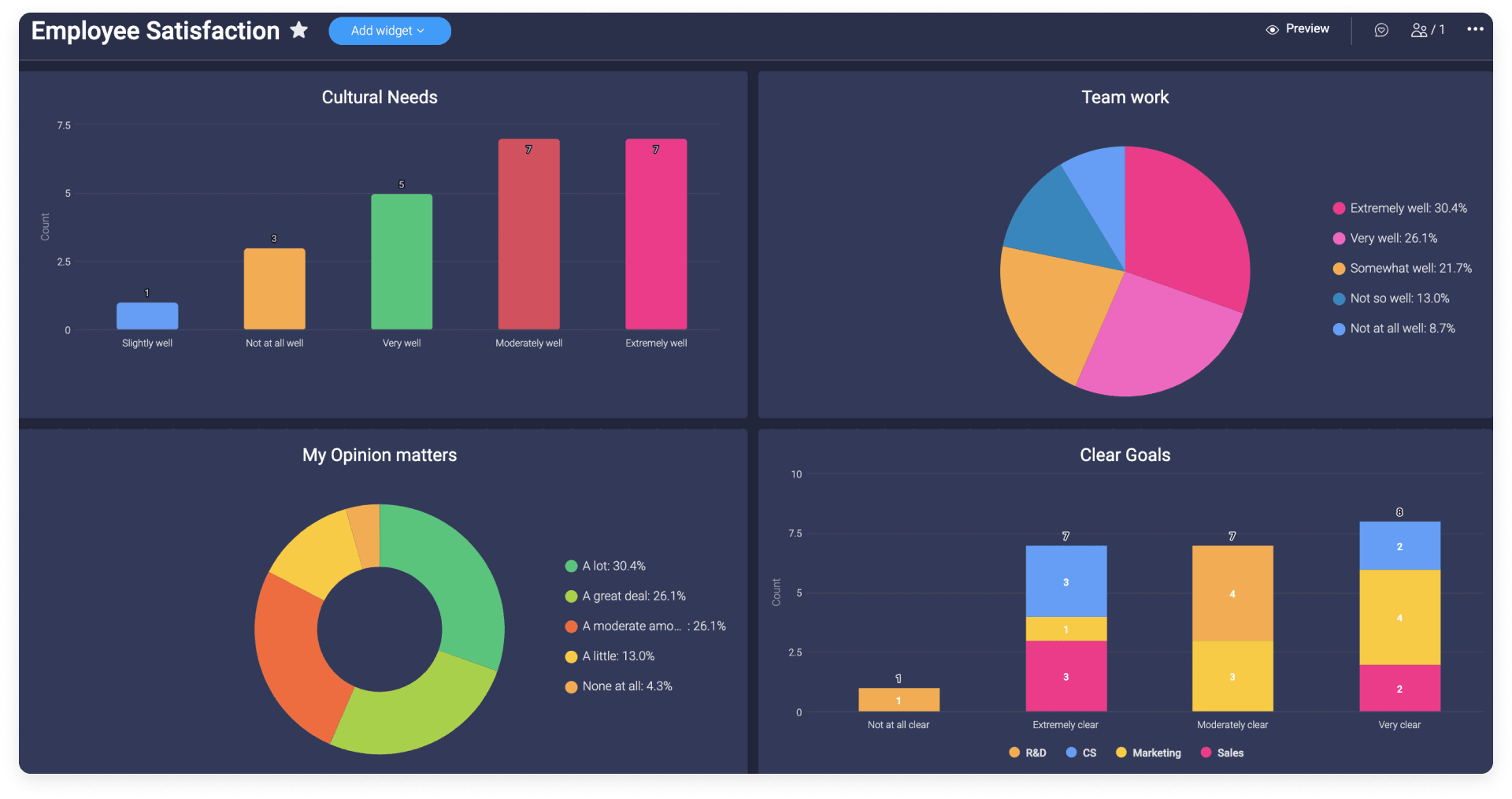
5. Communicate a clear purpose
Finally, make sure that your team understands the core mission of your organization. Why does your organization exist other than for the purpose of making money? When your team understands why they’re doing what they’re doing, they feel more motivated and enthusiastic about their job.
Try to introduce this mission in your onboarding process. If every employee is educated on your company’s core purpose from the beginning, it’ll be much easier to keep them motivated and involved along the way.
5 steps for effective team building
Team building requires a strategic approach. Otherwise, you’re just wasting time and resources.
Here’s a solid process you can follow:
1. Get your team involved
If you’re trying to strengthen your team relationships, it’s obvious that you should get your team involved in the process. This increases their sense of ownership and increases the likelihood of engagement. To start, inform them about your overall plan, what you’re trying to accomplish, and schedule a kickoff team meeting to communicate how the process will work.
Also, you should have a collaboration system in place to keep everything organized and collect feedback, especially if you’re dealing with a remote team. For example, with monday.com, you get access to powerful collaboration features, like file sharing, instant messaging, and the ability to add comments on documents.
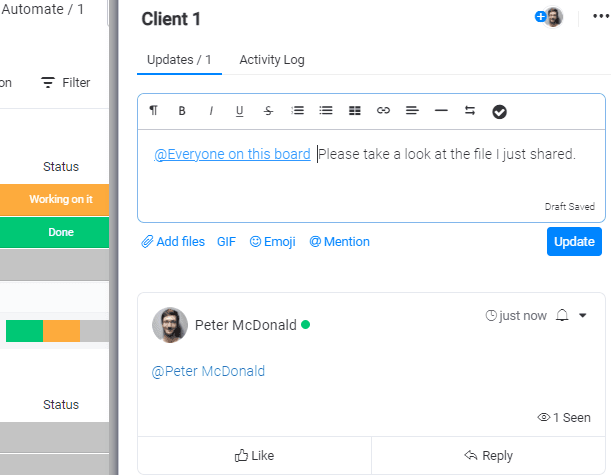
This is especially helpful when collecting feedback from your team members on specific projects and increasing engagement.
2. Set clear goals
Once your team is aligned and aware of the process you’ll implement, you should set clear goals. This way, you can measure whether your activities are working and where you may need to change direction.
In essence, you should answer: what are you trying to achieve with your team building efforts?
The SMART approach to goal-setting can be helpful at this stage.
Basically, this approach states that every goal you set must be:
- Specific
- Measurable
- Attainable
- Relevant
- Time-based
For example, ”Increase cross-team collaboration by 30% next quarter,” or “Improve employee retention rate 50% by 2025.” Setting this type of goal will keep everyone on the same page and help them be more conscious of the progress of their work.
3. Leverage technology to set up a collaborative environment
Once you’ve got clear goals in place, it’s time to set up a system to actually measure progress, organize your work, and keep track of every task involved. An effective Work OS can help you do this with efficiency.
For example, monday.com helps you centralize your team and information into a single place. This helps you remove silos between departments, increase organization-wide transparency, and help everyone communicate better. Besides, you get access to advanced reporting dashboards and up to 8 data visualizations to see the information that’s most relevant for your team.
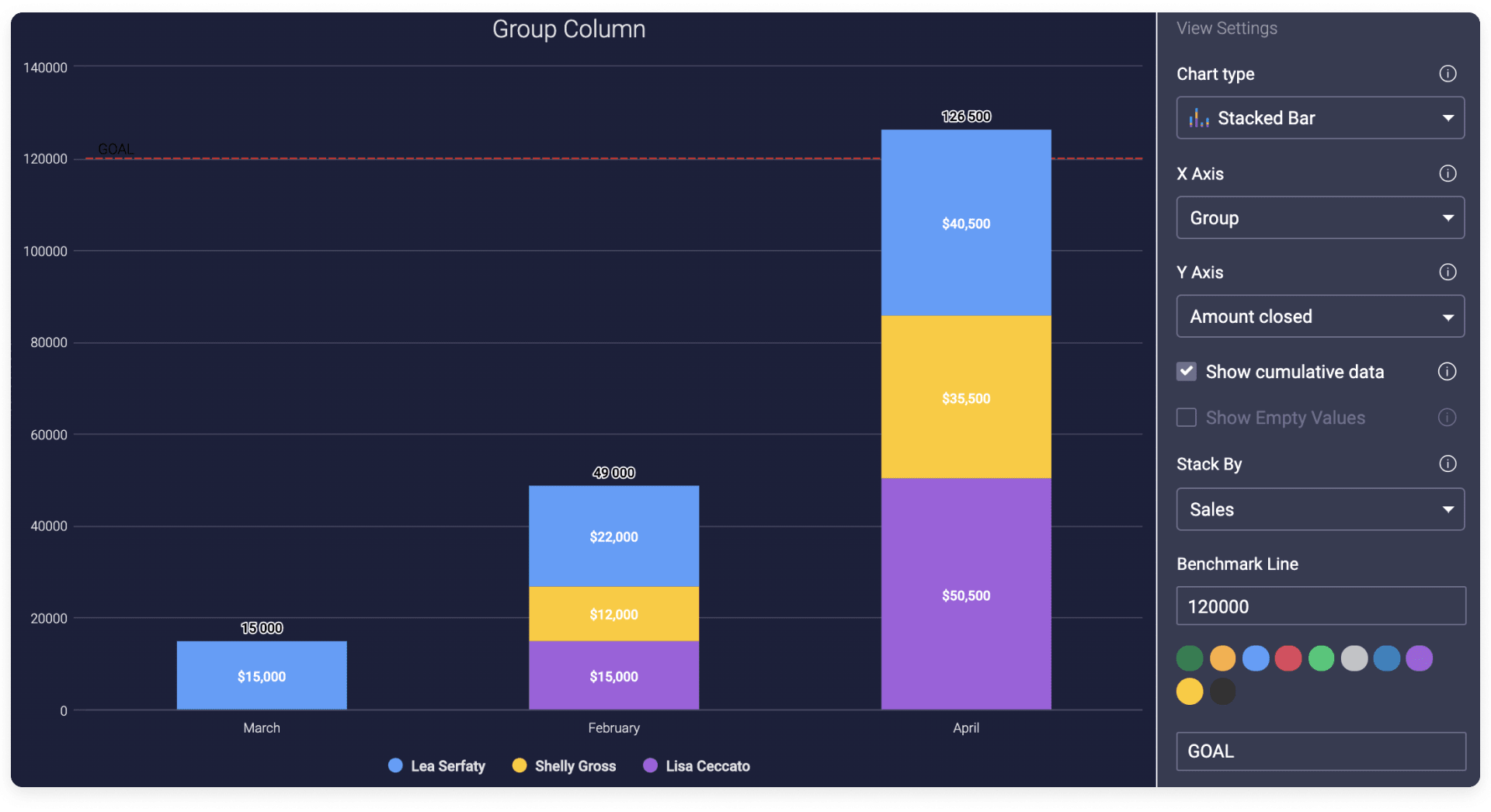
4. Create an action plan
Now, team building isn’t something that happens naturally, especially at the beginning. Before it becomes a habit in your organization, you must develop a clear roadmap of action to make sure nothing slips through the cracks.
To start, we suggest you define:
- The exact team building activities you’ll implement
- Team members who will be involved
- A designated team leader
- KPIs to measure progress
- Specific milestones
Then, define the progression of each activity in a calendar. For example, if you’ll host a weekly coffee break to foster communication, set the exact dates in your calendar and place it somewhere available to everyone.
The point is that you should have a clear understanding of how your team building process will work and what you’ll do to measure progress.
How to build a cohesive team with monday.com
At this point, you already know the basics to build a great team. But if you want to take things to the next level, there’s one more thing you should know — with the right system in place, team building can be much easier — and make a big impact. In fact, research suggests teams that rely on digital collaboration platforms experience a 20 to 30% increase in productivity.
If you want to experience that too, monday.com might help.
What is monday.com?
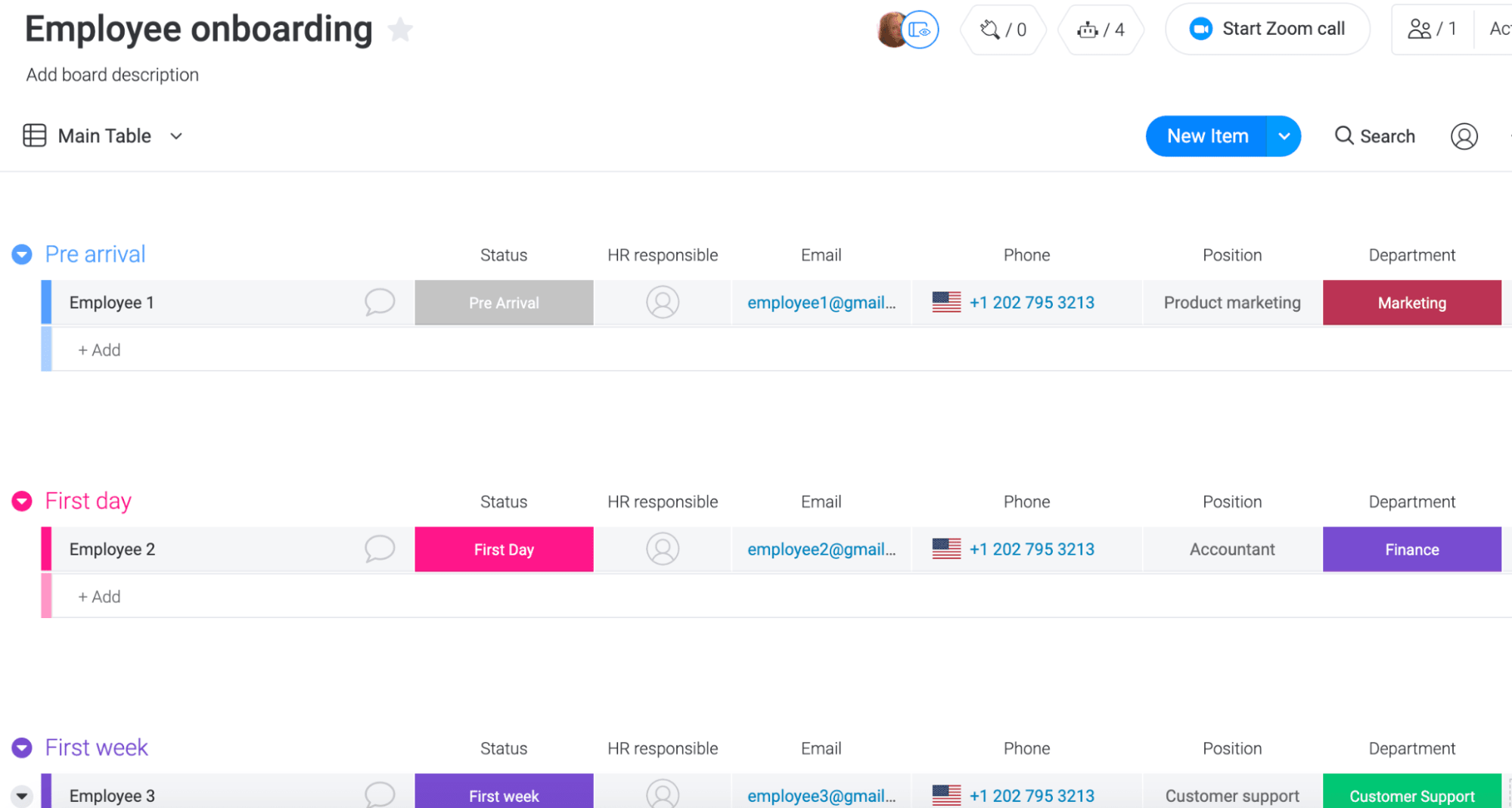
monday.com is a flexible Work Operating System (Work OS) where you can build custom digital workspaces to collaborate with your team. From the start, you get access to multiple “building blocks” that come with built-in drag-and-drop functionality. This way, you can design a platform that feels like it’s yours. Besides, our interface is so visual and intuitive that you don’t need any training to start using it. With vivid colors and friendly visuals, your team will be able to interact and work with our platform from day one.
Why monday.com?
Over 180,000 customers rely on monday.com to perform their day-to-day activities and work more efficiently — many of them experiencing pretty amazing results. ThoughtWorks, for example, improved cross-team collaboration by 73% after adopting monday.com.

Falkbuilt, a construction and interior design company, went from 0 to $1.3 million in interior construction projects in less than a year. And Seer Interactive was able to save 1.6 hours per week, per person, after adopting monday.com.
In short, whether you’re a small team trying to improve collaboration or an enterprise-level organization, monday.com provides you with everything you need to bring your team together and work more productively.
Now, in terms of features, here’s what we bring to the table:
- Intuitive dashboards: Get access to fully customizable dashboards to build the collaboration platform of your dreams.
- 250,000+ automations: Let our “robots” do the heavy lifting for you and focus on activities that really matter.
- 40+ integrations: Integrate the tools you already use and centralize your information into a single workspace.
- Project management: Manage your projects from start to finish with ease.
- Team management: Bring your entire team to the platform, assign tasks to individual team members, and measure both individual and group performance.
- Powerful collaboration: Share files, comment on tasks, tag your team members, and improve overall collaboration.
To get a complete understanding of our platform, we suggest you watch this short video:
Ready to strengthen your team?
Building a cohesive team will help you solve harder problems, work more efficiently, and build meaningful relationships in the workplace. Hopefully, you now have enough information to start your team building process on the right foot. And, if you’re looking for a platform that keeps you organized and helps you work under one roof, monday.com might be a good fit.
To see for yourself, we suggest you check out our fully customizable Employee Onboarding Template. It’ll help you increase employee engagement from the start.

